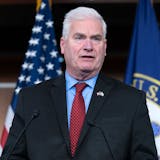Health care costs keep growing and employers see it front-and-center. In September, the California-based Kaiser Family Foundation reported that the average cost of family coverage in employer health plans now exceeds $20,000. The concerns have prompted some employers to consider cutting out middlemen by contracting for services directly with health care providers. It is a trend not lost on Mamie Segall, a longtime health care executive named this month as president of the Bloomington-based Minnesota Health Action Group. The organization developed an innovative plan called Choice Plus in the 1990s that allowed large employers to pool their purchasing power when buying health insurance. Segall wonders if something similar might work with drug coverage.
Q: You are originally from Wisconsin and went to law school in Boston. What brought you to the Twin Cities?
A: I moved to Minnesota to go to work for Attorney General Skip Humphrey. … In the AG's office, I spent seven years prosecuting white collar health care fraud, also abuse and neglect of vulnerable adults. Toward the end of my tenure in the AG's office, I led health policy initiatives.
Q: You moved to the private sector in the 1990s by working at Diversified Pharmaceutical Services, which started as the pharmaceutical benefits manager (PBM) for UnitedHealthcare — is that right?
A: I was their first legal compliance officer when the company was owned by SmithKline Beecham, an international pharmaceutical company. So, I got to learn a lot about PBM operations, the law, the science, the policy. I found it fascinating then, and I still do. The complexity and the importance of the drug benefit I think just continues to grow.
Q: The Minnesota Health Action Group represents large employers in the state that operate health plans for workers. What are employers' biggest concerns right now when it comes to health care?
A: I think that employers' biggest concerns ... are [first] affordability, broadly. No. 2 is mental health, broadly, and workplace mental health, specifically. And lastly, specialty drugs in specific, and pharmacy more generally. As we've had an explosion in opportunity and new therapies, critical therapies, we also have the challenge of figuring out how to pay for those therapies.
Q: How might the group respond?

